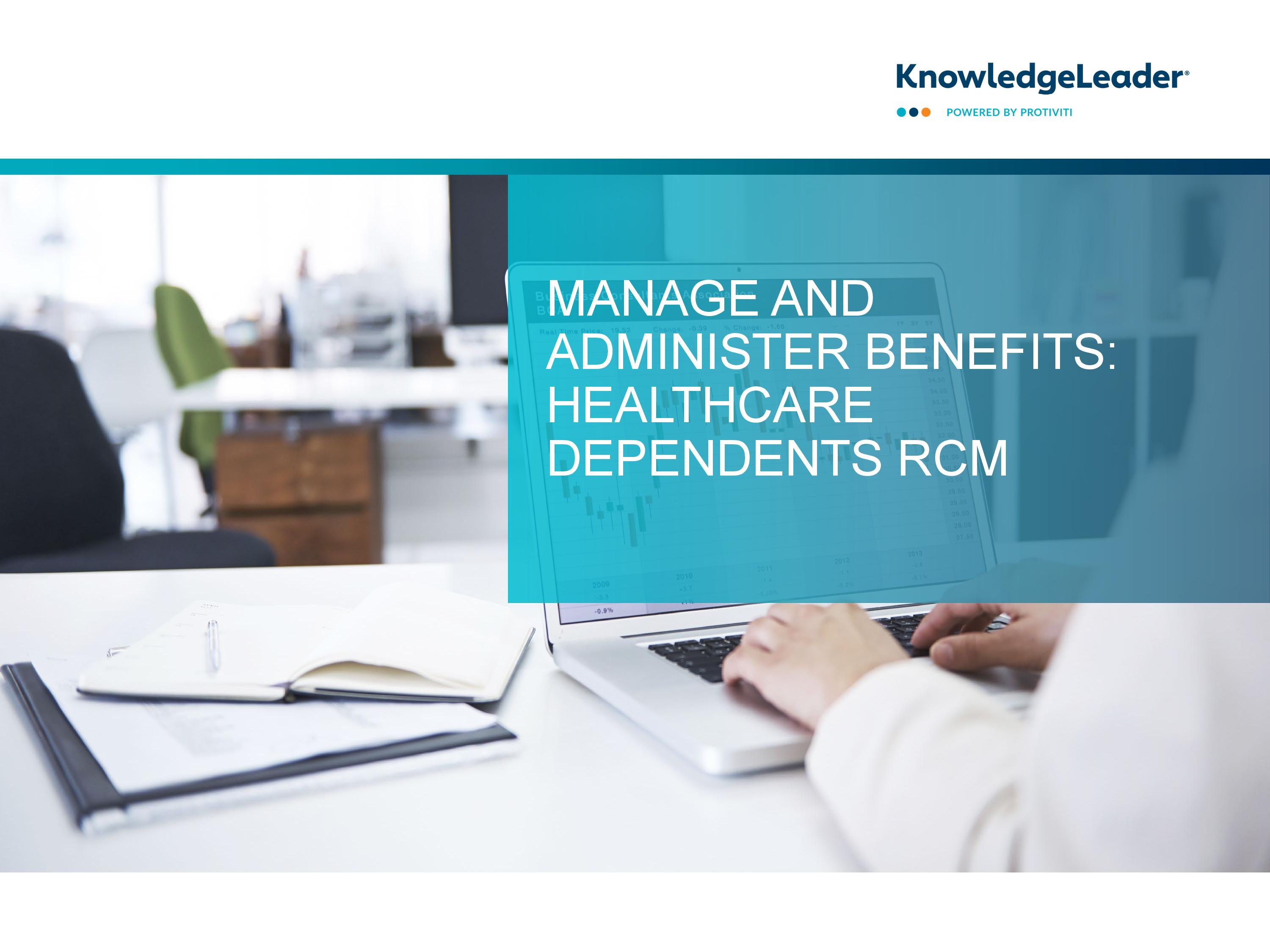Manage and Administer Benefits: Healthcare Dependents RCM

A successful risk management strategy requires a strong internal control environment. The RCM format emphasizes that strong and risk-oriented internal control environments are often optimized with automated/manual controls, depending on the situation.
An RCM provides an overview of different control objectives that organizations should take into consideration and the corresponding controls to safeguard the company against risks, which may arise if not checked timely. Once customized to an organization, this document can help the user in assessing each control. The control assessment can then also be summarized to develop an action plan.
This document outlines risks and controls common to the healthcare dependents aspect of the 3.5.7 Manage & Administer Benefits process in a risk control matrix (RCM) format.
Sample risks include:
- The employer’s healthcare coverage for dependents is not achieving the company-developed goals/objectives.
- An employee may falsely claim a dependent for health benefits or claim too many dependents.
- Any changes to the employer’s benefits plan or laws affecting the employer’s healthcare plans are not communicated to employees and their dependents.
- HR does not correctly inform the participant and the alternate recipient filing the QMCSO of their qualified status.
- HR or the plan administrator does not provide copies of the procedures for determining if the QMCSO is qualified to the participant and the alternate recipient.
This document can be used as a sample RCM and is not meant to be an exhaustive list of risks and controls. The KnowledgeLeader team will periodically update this RCM with new content. Organizations should select, update and modify the risks and controls included in this document to ensure that it reflects business operations.